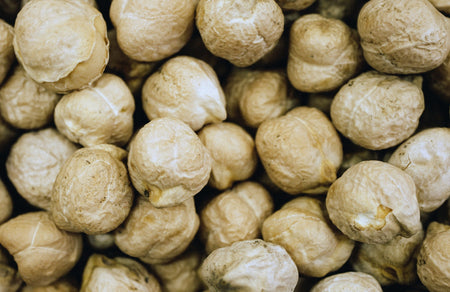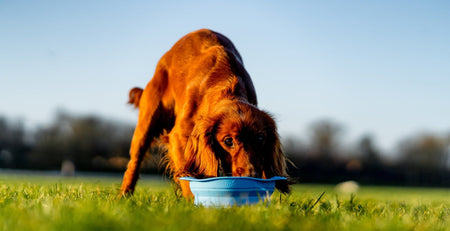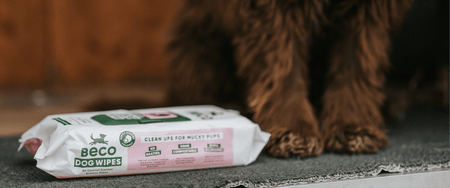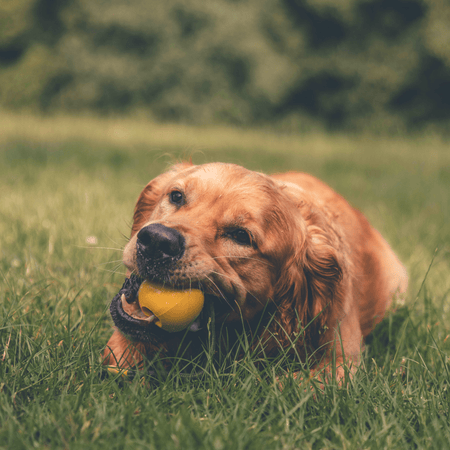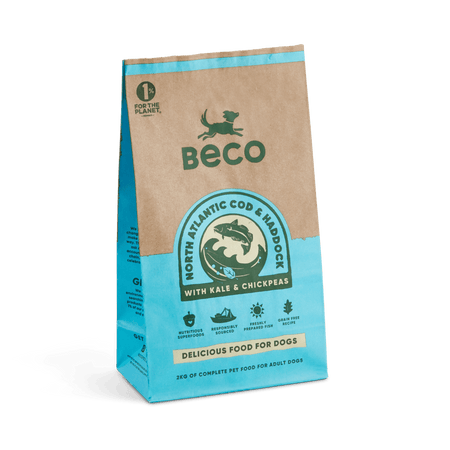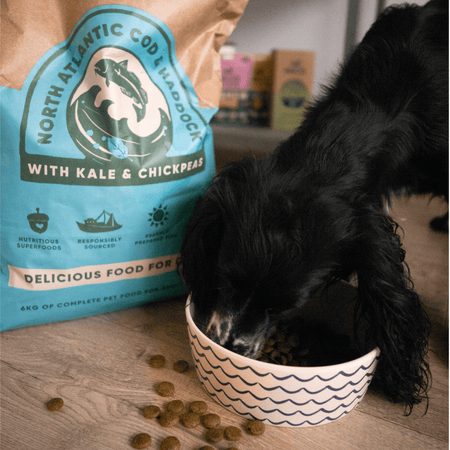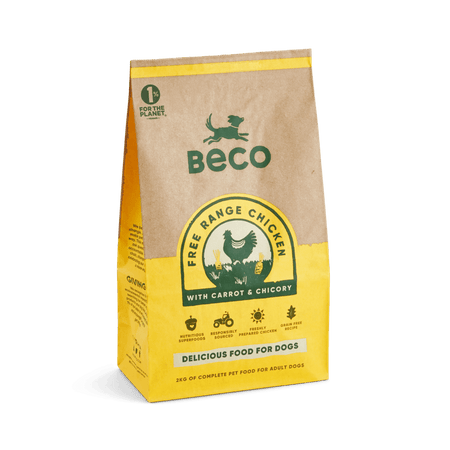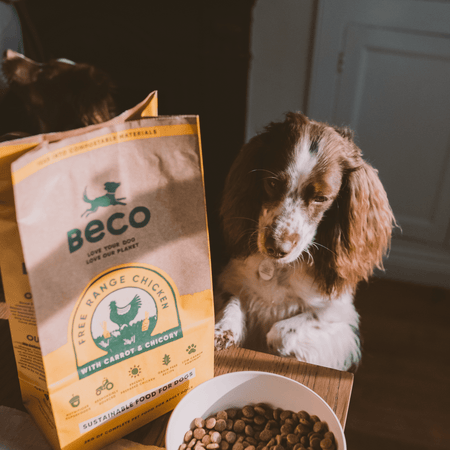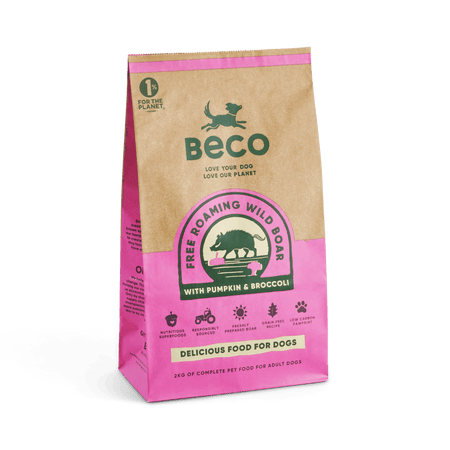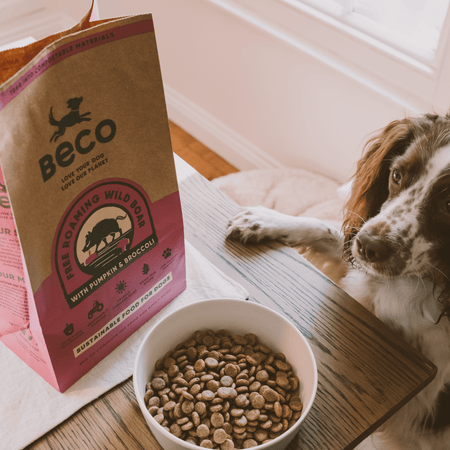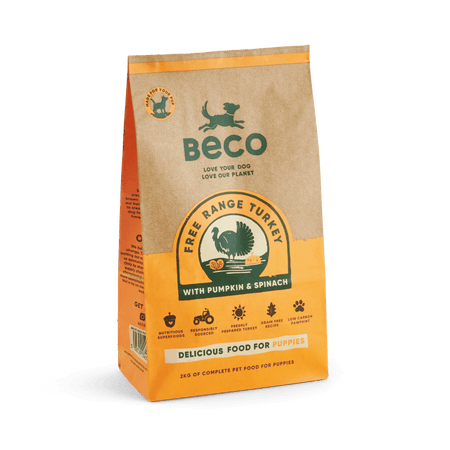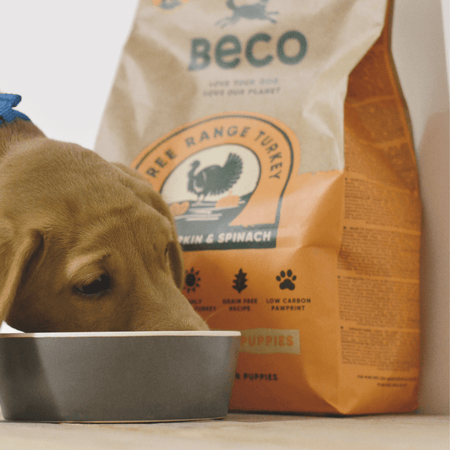Yes, dogs can eat chickpeas! Provided that you stick to the ingredient in its natural form, and avoid highly-processed alternatives, then chickpeas can be a great source of protein and fibre for your pooch.
These little nuggets of goodness will have your dog feeling full and satiated for longer, and won’t break the bank in doing so. As with any foodstuffs for dogs, though, there are few important things to note, and that’s what we’ll be discussing here!
Are chickpeas good for dogs?
Like other legumes and pulses, chickpeas are known to be a healthy natural ingredient - for both humans and dogs. That’s because they contain naturally high quantities of the following:
Protein (to support muscle growth)
Fibre (to promote healthy digestion)
Iron (to combat fatigue and lethargy)
Magnesium (again, to boost the body’s overall energy and metabolic activity)
Selenium (to improve cognition and immune functioning)
Vitamin B (for healthier hair and skin)
So, that’s why chickpeas are considered a ‘health’ food, but how much of it should you be feeding your dog?
Feed in moderation
As with most things in life, the key to feeding your dog chickpeas is in moderation. You can feed your dog cooked chickpeas (either from fresh or canned - although the latter comes with some caveats) and add some to their mealtime, to help give that protein punch.
If you’re worried about overfeeding your dog on chickpeas, then a more preferable alternative is to buy pre-made kibble dog food which already contains chickpeas. This way, you know your dog is getting the ingredient in exactly the right quantities it’s supposed to, not too much and not too little - in other words, you’re getting all of the benefits with none of the worry, because someone else has worried about it for you
Can dogs have hummus?
Avoid feeding your dog processed chickpea products like hummus wherever possible; this is because, whilst chickpea is the primary ingredient in hummus, even the ‘healthier’ hummus brands contain large quantities of fat in the form of olive oil, which isn’t good for your dog.
Typically, hummus also contains large quantities of seasoning, onion and garlic to help improve its taste. These aren’t particularly healthy for your dog’s digestive system, and nor is the citric acid from the lemon juice which is also commonly found in hummus products.
All in all, the health benefits that could conceivably be gained from the chickpeas in hummus are outweighed by the potential harm caused by its other component parts.
Can my dog eat canned chickpeas?
Yes, but it depends on the brand/can, itself. Whilst there’s nothing inherently wrong with feeding your dog canned chickpeas, many manufacturers will tin their chickpeas in salted water, so as to better preserve them and add flavour.
Dogs are prone to hypertension (high blood pressure) just like humans, and too much salt is one of its leading causes. To help avoid this, try and choose canned chickpeas with a lower sodium content, and then thoroughly rinse them before cooking, to try and wash some of the excess salt off.
It’s also worth looking at the ingredients on the can in terms of additional preservatives or ingredients. As a general rule, the fewer the ingredients the better! All you’re looking for is good, old-fashioned chickpeas, and nothing else if you can help it! So, yes, your dog can eat canned chickpeas, but if you’re able to get fresh chickpeas from the local market or grocer’s, then that’s always preferable.
Can dogs eat garbanzo beans?
Yes! Garbanzo beans is just another name used for chickpeas - they’re exactly the same ingredient, so everything we’ve mentioned here regarding chickpeas also applies to garbanzo beans.
Are chickpeas easy for dogs to digest?
Because chickpeas are high in fibre, which isn’t digested by the body but is instead used to help promote good bowel health, they’re not the most easily digested thing, but ironically - in the right quantities - they help with digestion. It’s another “baby bear’s” porridge situation.
Both too much fibre and not enough fibre can lead to digestive regulation issues, such as constipation on one end of the spectrum, and diarrhea on the other. The right quantity, however, will help give your dogs regular bowel movements and a healthier digestive tract.
Many modern dog-food manufacturers are looking to shift away from grains as the ‘fillers’ for their dog food. Chickpeas provide a great alternative, thanks to their energy dense nature and are often found alongside peas and other legumes in today’s dog foods.

What should I combine chickpeas with for my dog?
One of the only downsides of chickpeas is that, whilst it’s high in protein - which is essential, it’s high in a particular type of protein called plant protein. Dogs require certain other amino acids, not present in plant proteins, that are more readily available in animal proteins, which unsurprisingly come from meat-based foods.
That’s why, if you feed your dog kibble, then you should look for an option which also features a meat protein. The best way to serve chickpeas to your dog are as follows:
As part of a pre-made kibble.
Roasted, dried and served as a treat or snack for walks and training.
Ground down to its flour form, and used to bake tasty, doggy treats.
Why not try our grain free chickpea dog food?
If you’re looking for a new, chickpea-based alternative to your current dog kibble, then why not try any of our grain free kibbles!

